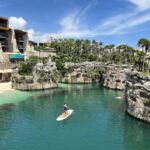What It’s Like to Hike Across Norway’s Mountains and Fjords

Norway is a country defined by landscape. Its long, rugged coastline, dramatic fjords, and glacier-fed lakes make it one of the most visually striking places in Europe. But to truly experience it, you need to move slowly—on foot, through the valleys and across the ridges that shape the country’s character.
Table of Contents
ToggleWhat It’s Like to Hike Across Norway’s Mountains and Fjords
Norway is a country defined by landscape. Its long, rugged coastline, dramatic fjords, and glacier-fed lakes make it one of the most visually striking places in Europe. But to truly experience it, you need to move slowly—on foot, through the valleys and across the ridges that shape the country’s character. Hiking in Norway is less about checking off famous landmarks and more about inhabiting the space between them. It’s about time, distance, and quiet.
What stands out most isn’t any single viewpoint or summit. It’s how the landscape changes over the course of a day. One hour you’re climbing through birch forests with the sound of water nearby; the next you’re crossing wide, open plateaus with no trees in sight—just rock, wind, and the vastness of it all.
A Landscape Built for Walking
Norway’s geography is wild but surprisingly walkable. The country’s network of marked trails and maintained huts allows for multi-day hiking without the need to carry a tent or weeks of supplies. While some routes require stamina and good weather sense, others are more forgiving—long but gradual, exposed but well-supported.
In many parts of the country, it’s possible to hike for hours without seeing anyone, and yet still arrive at a staffed mountain hut in time for dinner. These routes are often part of longer trail systems, linking valleys to fjords, and lowland farms to high alpine lakes. For those planning multi-day journeys, Norway hiking tours often follow these traditional tracks, combining scenic immersion with logistical ease.
Rhythms of a Hut-to-Hut Experience
The hut system in Norway—operated in large part by the Norwegian Trekking Association—offers a rare blend of wilderness and comfort. Many of the huts are simple but well-maintained, offering beds, meals, and a communal atmosphere. Some are staffed, others self-service, but nearly all are located with intention: close to water, on high ground, or nestled in wind-protected valleys.
Walking from one hut to another sets a rhythm that feels ancient and intuitive. You wake, eat, walk, rest, and repeat. The distances vary, but most days involve steady effort rather than high drama. The scenery often delivers the latter: turquoise lakes, reindeer paths, glaciers at a distance, or, in some regions, views that drop all the way to the sea.
The routine builds a kind of clarity. Time stretches out. The terrain dictates your pace. Conversations—if they happen at all—tend to be short and sincere.
Fjords, Forests, and High Plateaus
Each region in Norway has its own texture. In the west, fjordlands dominate: long, deep arms of sea that cut into steep cliffs and lead to trails with dramatic ascents and descents. These routes can be challenging but deliver extraordinary views. In the east, terrain softens. The Hardangervidda, for instance, is a vast plateau—Europe’s largest mountain plain—where you can walk for days across open tundra, never far from water or trail markers.
Central Norway offers a mix of both—dense forests, high passes, and alpine lakes, while the far north introduces Arctic elements like midnight sun and shifting weather patterns. Many Norway hiking tours choose routes that balance these contrasts, offering a blend of exposure and shelter, solitude and support.
Wherever you go, it’s not the grand vistas that stay with you most. It’s the feeling of being in a place shaped by weather and time, where trails don’t cut through nature—they follow it.
Seasons and Sensibility
The hiking season in Norway is relatively short. In most regions, trails open in mid-June and remain walkable through September. Snow lingers into summer at higher elevations, and weather can shift quickly even in peak season. Layered clothing, proper footwear, and some comfort with unpredictability are essential.
That said, summer hiking here can be surprisingly warm and bright, especially in southern regions. The long daylight hours allow for flexible pacing and generous breaks. Many travellers are surprised by the stillness they find—both in the land and in themselves.
For those unfamiliar with Norway’s scale or looking for logistical support, the appeal of semi-planned routes is growing. These offer trail guidance, overnight coordination, and a structured rhythm without removing the freedom of walking. It’s a model that reflects Norway itself: organised, but open.
To hike across Norway is to move through a landscape that asks for your attention but never demands it. It offers space, silence, and the kind of satisfaction that builds not from reaching a destination, but from how you get there. The trail may rise steeply or stretch long into a valley, but what it offers—above all—is the feeling that you are exactly where you’re meant to be, at the pace nature intended.
In a world that moves quickly, walking through Norway feels like a return to something slower, something grounded. And for those ready to trade urgency for experience, the mountains and fjords are waiting.
Published by Carol Jones
My aim is to offer unique, useful, high-quality articles that our readers will love. Whether it is the latest trends, fashion, lifestyle, beauty , technology I offer it all View more posts
Recent Post
Golf Resorts In Greece – Something’s Changing

Rediscover Luxury and Nature at Hotel Xcaret Mexico

How To Act When Your Check Engine Light Is Flashing





